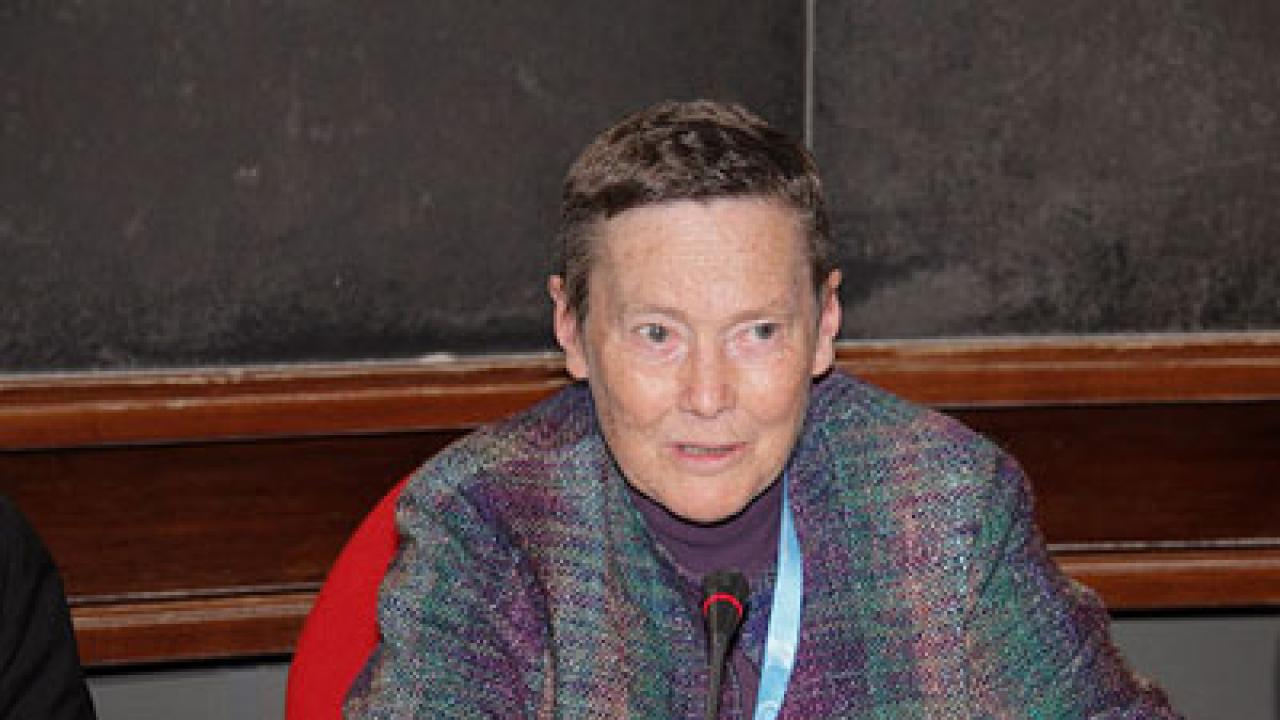
by Helen Quinn
I grew up in Australia, in a time and place where young girls were not encouraged to think in terms of lifelong careers. We might work for a few years before settling down to marriage and raising a family. Not only my teachers, but also my parents viewed that as the expected pattern of my life. It never occurred to me to question it. So I never dreamed of the life I would eventually lead, as a scientist with world-wide connections to colleagues and an international reputation.
Fortunately, my parents valued imagination and curiosity. They treated me no differently from my brothers in the way they encouraged these skills, while ensuring that I also developed the skills I would need as a wife and mother. The school that I moved to in second grade was also a very fortunate choice for me, as its elementary school programme had a progressive educational style, modelled on the thinking of John Dewey, that fostered individual motivation and intellectual development. Its high school programme, while more formal and structured, was fortunate in the quality of the women who were its teachers. These were intelligent women, almost all of them unmarried; teaching was one of the few careers open to them. They valued and supported my eagerness to learn and challenged me to think.
I remember my excellent high school math teacher once strayed from the party line on careers. She said to me, "Helen, you could be a mathematician," but added after a short pause, "because you are so lazy. You refuse to do a problem the hard way, you always think until you find a clever way to solve the problem." I was not sure whether I had been scolded or praised, but I was surprised by the suggestion that mathematics could be a career.
I never consciously decided that science was my path. The first time that I had a choice about what subjects I would study was in 10th grade. When I suggested a plan of study that did not include the most challenging level of science offered both my teachers and my parents insisted that was not the right choice for me. I took the courses they suggested. In the next two years the number of subjects one could study continued to narrow and the content of the courses deepened. I always took as many courses as I could, including all the science and mathematics courses. I think this was partly because those were the courses I excelled in, and partly because I was steadily encouraged in my interest in this direction particularly by my father, himself an engineer.
I matriculated from high school at age 16 and started at Melbourne University. In my second year there, my father was invited to transfer to the US to work for the parent company of the small engineering firm he had led in Australia. The US company offered to move the entire family to the US for three years, or longer if we decided to stay. We all agreed that a three year stay in the US would be an interesting experience. We all stayed much longer than that!
I looked up and applied to two universities that were close to where my family would be: Stanford and the University of California at Berkeley. Stanford was more generous about giving me credit for the work I had done in Australia, so I chose to go there. A physics major turned out to be the easiest one to complete. I could do it in one year and one quarter of study.
By the time I had completed my undergraduate degree I had become truly interested in physics, and Stanford faculty were actively encouraging me to go on to graduate school. I applied for PhD programmes, even though I doubted I would complete one. I did this simply because the schools that looked most interesting to me did not accept students for a masters degree programme. Secretly I planned to complete a one-year masters degree and then become a high school physics teacher. I simply did not yet have confidence that I could have a career in physics. But by the end of that first year I had become fascinated by the physics I was learning. I stayed and became a physicist. My specialty is particle physics.
I married a fellow physics student and we began our careers with postdoctoral appointments at DESY, a high energy physics laboratory in Hamburg, Germany. We then moved to the Boston area, where my husband taught at Tufts and I eventually became a faculty member at Harvard. We lived there for seven years and our two children were born during this time (so I was, and am, a wife and a mother, as well as being a physicist; indeed this year I am looking forward to becoming a grandmother). We returned to California in 1976, when my husband began a new career in decision analysis. I have been at SLAC (Stanford Linear Accelerator Center) since 1977.
(Adapted from One Hundred Reasons to be a Scientist, 2005, published by ICTP)
















